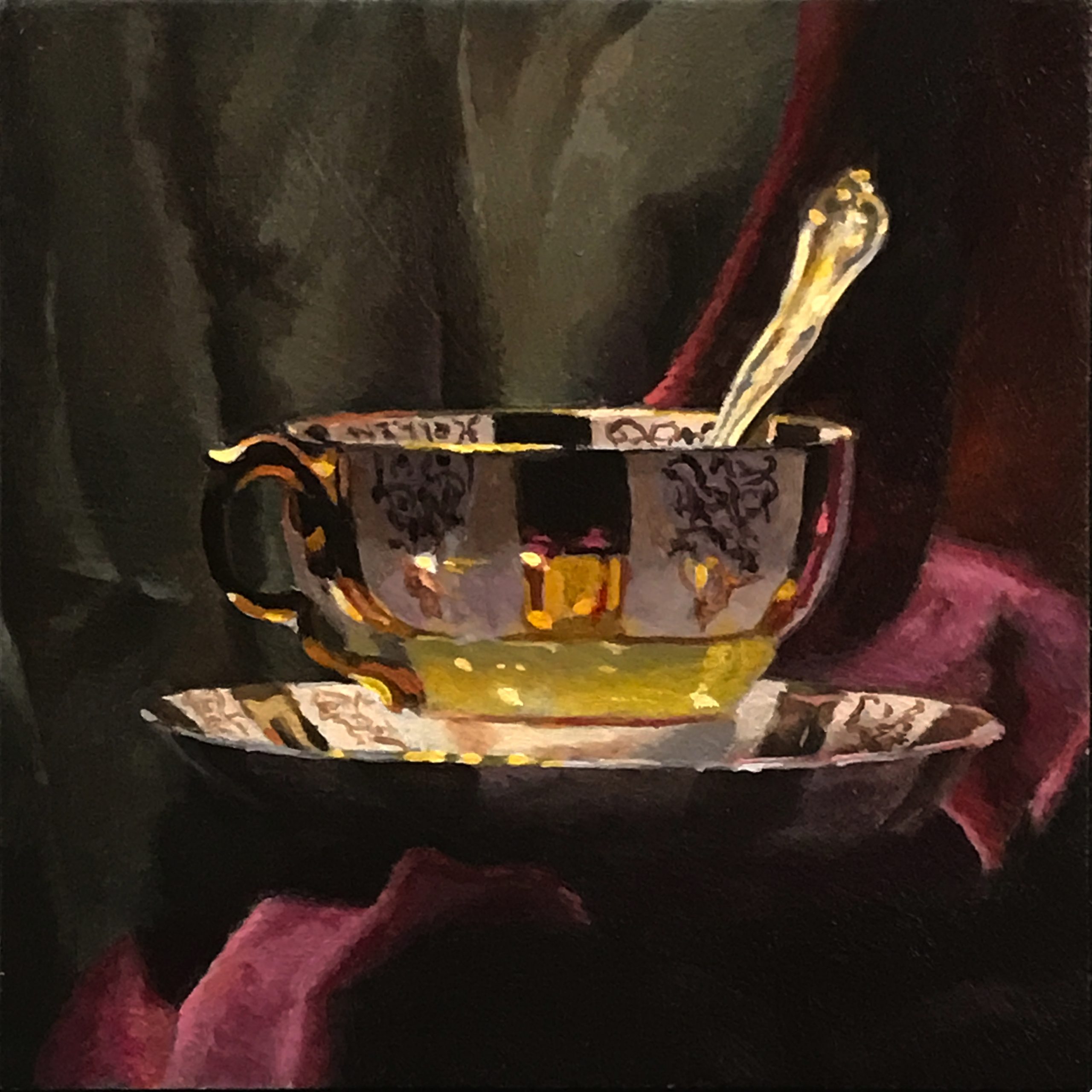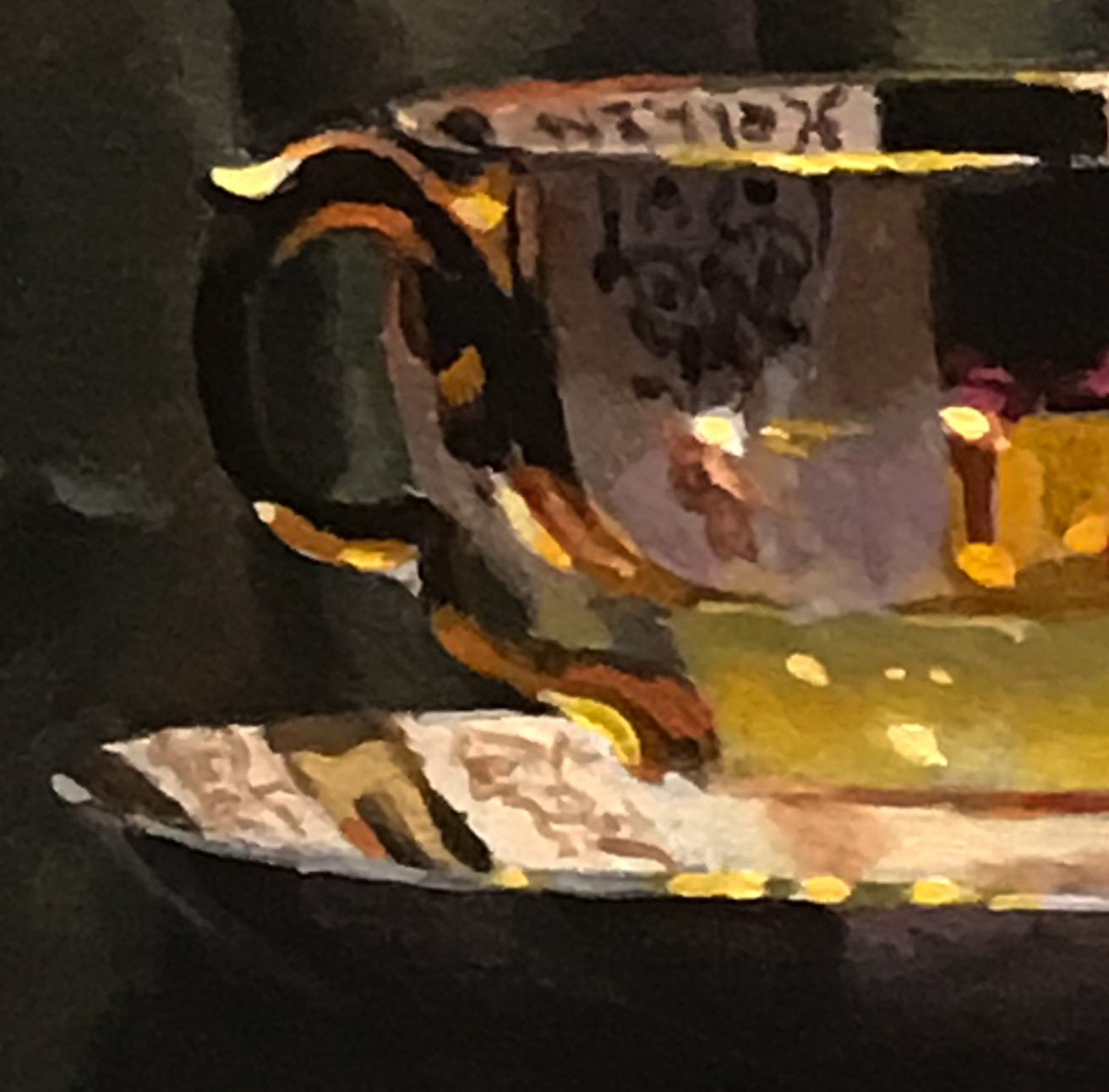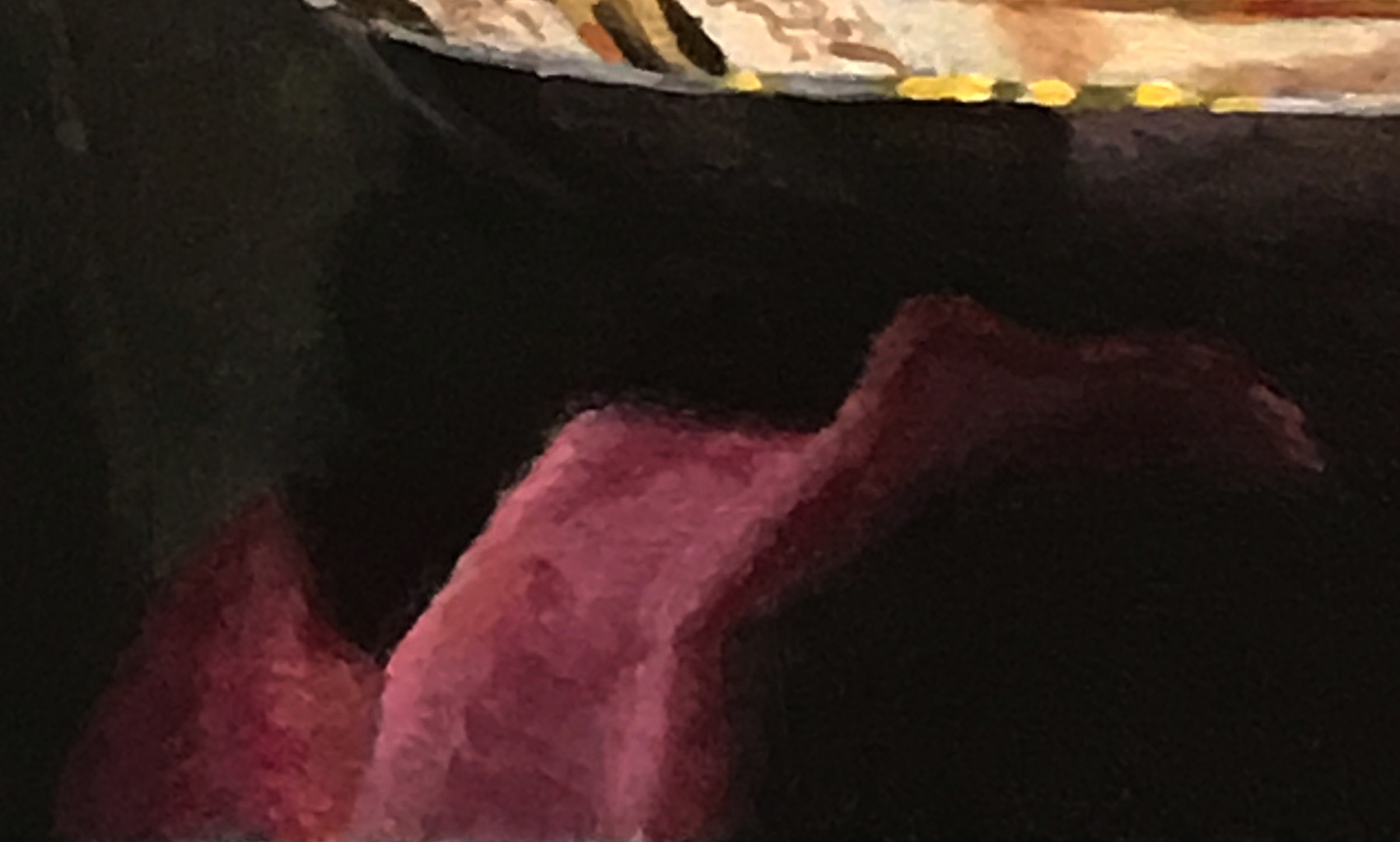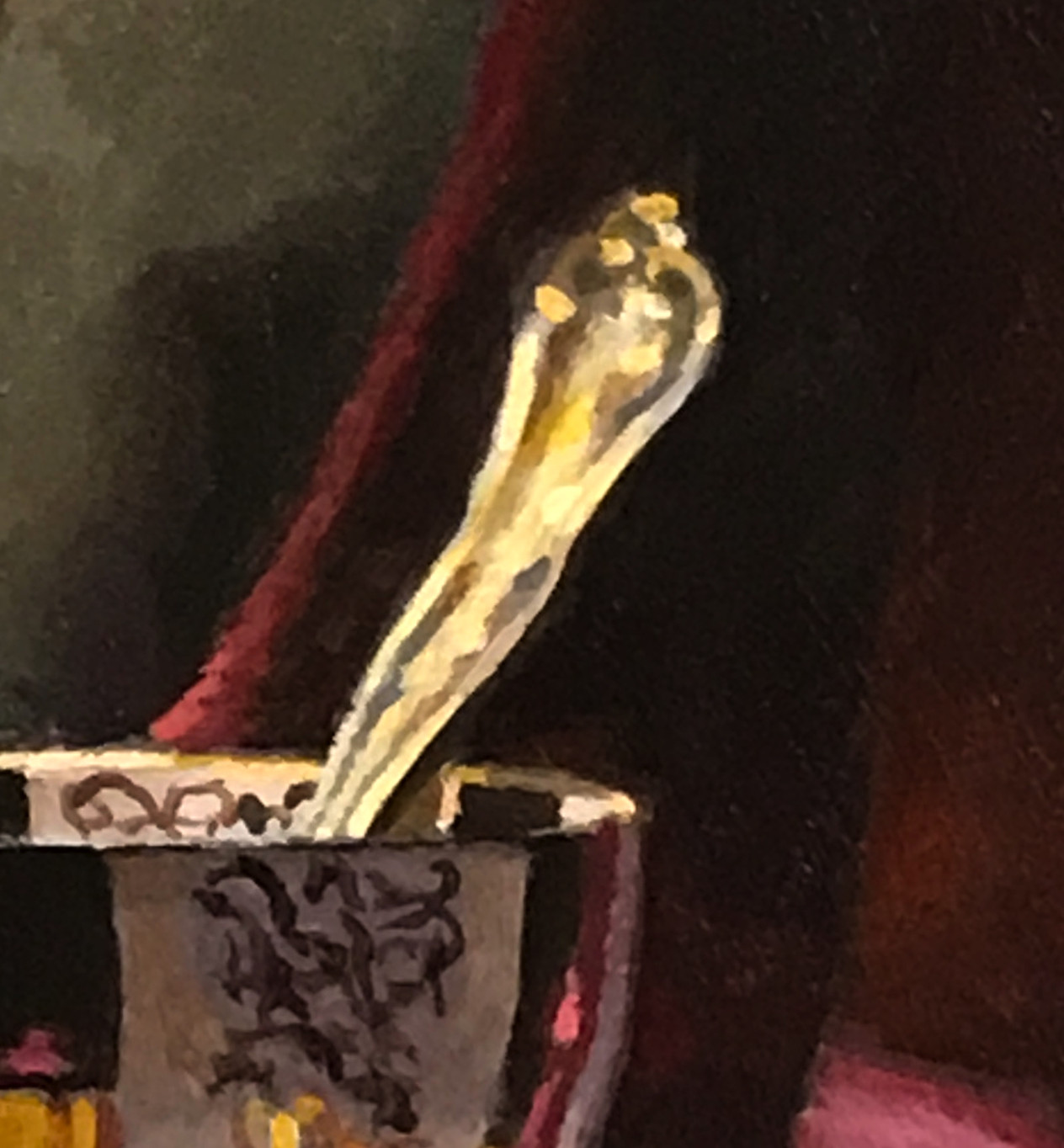Painting With Acrylics What I love about it, and how it seems to make me a better oil painter

acrylic on panel, 5×5 inches.
Unlike most of my paintings which are done in oil, this is a painting done with acrylics.
Commercially available since the 1950s, acrylic is a modern medium, though by this point it can hardly be called a new one – by contrast, oil has been the dominant painting medium for 500 years, and its occasional use may predate that by several centuries, at least.
At first, they appear quite similar – they usually come in tubes (think of a tube of toothpaste), and are squeezed out onto the palette where the artist can mix up the desired color and brush it onto the canvas.
But then the enormous difference between acrylic and oil presents itself.
Oil dries very, very slowly – the quickest might be overnight, while it usually needs upwards of a week before it is dry to the touch. This is actually oil’s great strength – while it is still wet, it can be blended, worked, and adjusted almost endlessly, allowing the artist as much time as is needed to get the desired effect (there are additives that will accelerate the drying time of oil, but I usually prefer to keep the paint as pure and simple as possible).
Acrylic, on the other hand, dries almost instantly. A brushstroke placed on the canvas will be completely dry within minutes. This makes the kind of blending and adjusting that can effortlessly be done with oil quite difficult, if not impossible (while there are additives that can slow the drying of acrylic, I usually prefer to avoid those as well).
Instead of trying to get acrylic to behave more like oil, I like to work with the strengths that are inherent with acrylic, and that means working differently than with oil.
Rather than viewing the fast drying time as a hinderance, I try to leverage it to create stronger paintings.

Glazing
First, acrylic is the perfect medium for working with glazes – it simply cannot be surpassed in this regard.
A glaze is a very thin wash of color that is applied to an existing passage of a painting. Since the glaze is transparent, the passage beneath it remains completely visible – the glaze simply imparts some color to what is already there.
Because of the physics of the way the light passes through mulitple layers of paint, a glazed passage will appear quite different than a passage of exactly the same color painted with opaque paint – The glaze will have a depth and shimmer to it that the opaque paint can never achieve – glazed passages have a jewel-like quality to them, much like stained glass.
Glazes have been done with oil for as long as artists have been using oil paint – for instance, Titian (c. 1490 – 1576) is known to have used as many as 50 glazes for certain passages in his works, one layer of glaze right over the previous one.
The drying time of oils becomes the problem here – the base passage must be thoroughly dried before it receives a glaze, and each glaze must dry completely before another layer of glaze is applied over it. Again – a minimum of overnight drying before each next step.
Yet with acrylic, that process can be done almost instantly. A glazing effect that might require weeks to complete with oil can be done in less than an hour with acrylic paint.
When I first tried glazing with acrylic, it felt almost miraculous.

Discipline and Attentiveness
I’ve found that the fast drying time also forces me to be more focused and disciplined about certain aspects of painting – particularly mixing colors.
Let’s say I’m painting a lemon. With oil, I can mix up an approximation of the color needed and brush that paint right onto the canvas. If the color isn’t exactly right, I can smudge it around with some of the surrounding colors, and often enough get a result that is sort of correct.
Often enough this works just fine, but it is a shortcut – a lazy way of doing things – and sometimes it shows.
With acrylic, this shortcut just isn’t an option; the paint I put down on the canvas has to be right, period. And if it isn’t right, it has to be remixed and reapplied.
Aside from getting good results, I love the discipline that this aspect of working with acrylic gives me. After I do an acrylic painting and then return to oils, I feel like I’ve brought some of that focus and concentration with me, and the oil painting seems better because of that as well.

Speed
Finally, there is something great to be said for just being able to finish a painting quickly.
The above painting, for instance, had to be started, completed, and shipped within a week – a similar painting in oil would have required at least a month before it could leave my studio.
Every time I can finish a painting and send it on its way, I feel better for it – both artistically and personally.
I’ll always paint with oil first and foremost – there is just endless magic in it.
But I’ll always work with acrylic too – if for no other reason than I think it makes me a better oil painter.